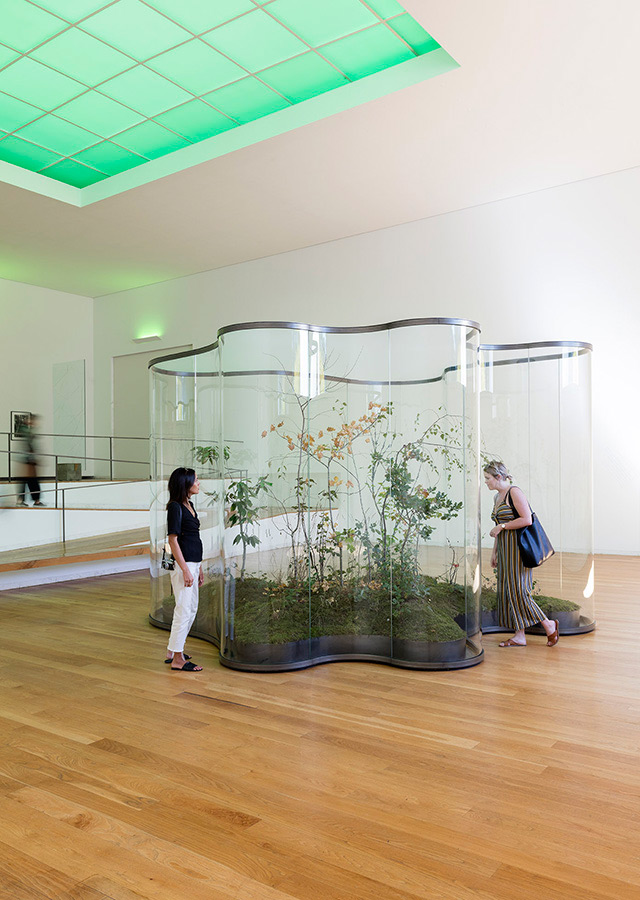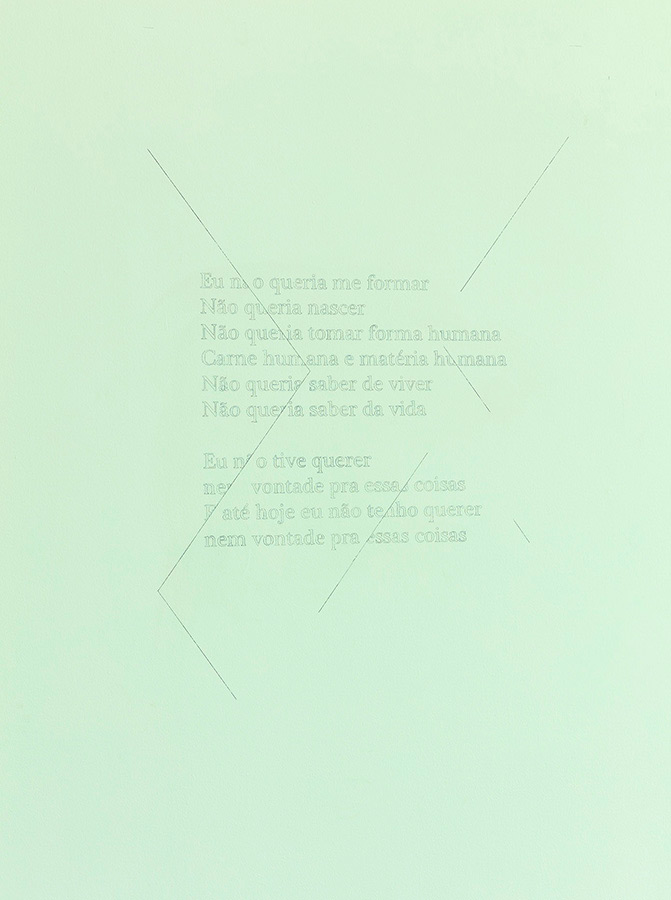The work of Brazilian-based, Catalan-born artist Daniel Steegmann Mangrané is based on subtle and poetic scenarios that address the relationship between the perceptual world and objects, in which space and the physical encounter of the viewer is tantamount.
Fundamental to Steegmann Mangrané’s art is his exploration of the act of exhibiting and the exhibition as a medium in its own right. Presentations of his work tend to take the form of a kind of Gesamtkunstwerk — a total work of art —, in which art works, viewers and space are bound in a dynamic relationship of mutual transformation. According to Steegmann Mangrané, the museum should cease to be a ‘space of accumulation of artifacts, isolated and protected from the exterior world, and instead should be a place where our relationship to objects and their reality is reconfigured’.
Taking up the central gallery of the Serralves Museum, ‘A transparent leaf instead of the mouth’ (2017) presents works in various media. The whole is bathed by a green light that suggests the luminous atmosphere of a tropical forest. In the centre of the space is a curved, glass pavilion that houses a garden containing plants and animals. An ecosystem was created in the pavilion, where autochthonous trees and shrubs coexist with exotic species of stick insects and leaf insects, which feed from them in a complex web of interdependencies. These insects adopt a form of mimicry so extreme as a life strategy that they dissolve into their surrounding environment, raising philosophical questions about the boundaries between the subject and its environment in a system of consumptions, transfigurations and metamorphoses, both real and symbolic.
The curvilinear simplicity of Upsylon (2015) places this work at the intersection between drawing (and its relationship to the mental sphere) and sculpture (and its relationship to the body). A similar coming together of the mental and the physical is present in the
complex web of Morfogenesis-Cripsis (2017), a wall drawing in which the repetition of a geometric cell evokes organic tissue. Tensions underlying the interactions between man, the artificial and the natural world are also addressed in Spiral Forest (2015) in which nature is captured in its isolated exuberance; or through collection, manipulation or imitation of natural elements, as in Fura Folhas (2015).
The human body is included among the subjects of this dual nature around which the different works oscillate, with the phantasmagoric hologram Mano con Hojas [Hand with Leaves] (2015), the two large ‘windows’ Systemic Grid 17 (Window 1) and Systemic Grid 17 (Window 2) (2015), that allow us to see unfocused cross-sections of the outside world and of one another, and the poems of Brazilian author Stela do Patrocínio (I didn’t want to assume human form, human flesh or human matter, 2016), in which the body fragments, dissolves and turns into air.















































